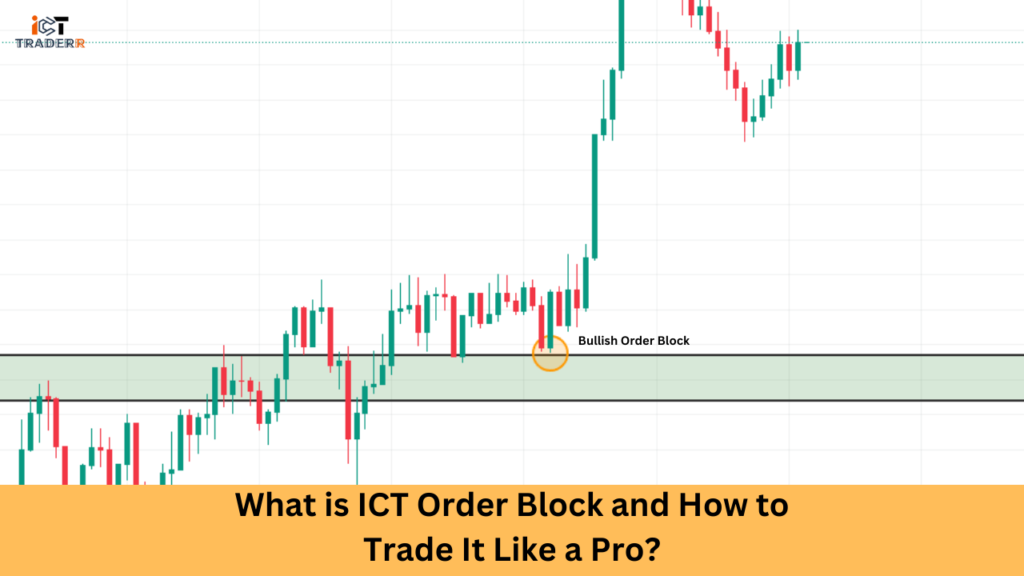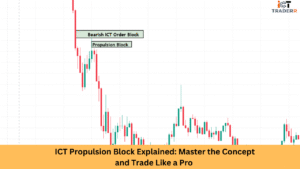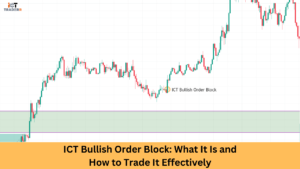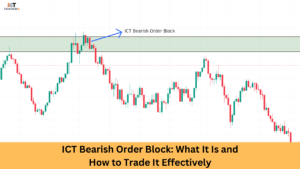Successful trading is all about understanding market structure and key price levels. One such popular concept among traders is the ICT Order Block. In this article we will discuss what exactly an ICT Order Block is, the different types, how to identify strong order blocks, and how to trade them like a professional trader. We will also discuss some common mistakes that traders make and will address their frequently asked questions.

What is an ICT Order Block?
An ICT Order Block is essentially a price zone where institutional traders place large buy/sell orders, thus making a huge price swing. These blocks are considered to be the strongest support or most resistant levels in technical analysis. Traders use them to anticipate future price actions and make decisions accordingly.
Order blocks form when smart money accumulates or distributes assets, then forming a consolidation area before the next major price move. They are nothing but footprints of institutional activities, which can help retail traders align their trades in the direction of the market.
Types of Order Blocks
Understanding the different types of order blocks can help traders better anticipate market movements. Here are the main types:
Bullish Order Blocks
Bullish Order Blocks form during downward movements and signal potential buying opportunities. They typically appear as bearish candles before a significant upward move.
Characteristics:
- Found at support levels
- Large buying volume
- Price action shows a strong upward push after consolidation.
Bearish Order Blocks
Bearish Order Blocks develop during upward movements and signal potential selling opportunities. They typically appear as bullish candles before a substantial downward move.
Characteristics:
- Found at resistance levels
- High selling volume
- A sharp price drop after accumulation
How to Identify a Strong ICT Order Block?
To successfully trade ICT order blocks, it is crucial to recognize high-probability setups. Here’s how you can identify a strong order block:
Look for Institutional Footprints
Institutions leave behind large volume imbalances. Spot areas where price consolidates before making an explosive move. These zones often indicate smart money activity.
Confirm with the Market Structure
Strong order blocks align with market structure. If the price follows a bullish trend, a bullish order block at a support level becomes a strong trade setup.
Observe Candlestick’s Behavior
Rejection wicks and engulfing patterns at order block levels strengthen the validity of the zone. A bullish engulfing pattern at a bullish order block or a bearish engulfing pattern at a bearish order block confirms institutional interest.
Volume Confirmation
Volume spikes during order block formation indicate institutional activity. A high-volume breakout from an order block is a strong confirmation.
Use Fibonacci Retracement
Order blocks often align with key Fibonacci retracement levels (61.8% or 78.6%). This confluence increases the probability of a successful trade.
How to Trade ICT Order Blocks Like a Pro?
Trading ICT Order Blocks effectively requires a combination of technical analysis, risk management, and discipline. Here’s a step-by-step guide to trading them like a pro:
Mark Key Order Blocks
Use higher timeframes (H4, D1) to identify strong order blocks. These provide more reliable setups than lower timeframes.
Wait for Confirmation
Do not enter immediately. Wait for price action confirmation, such as a rejection wick, engulfing pattern, or a break of structure.
Use a Stop Loss
Place stop-loss orders below a bullish order block or above a bearish order block to manage risk effectively.
Enter on a Retest
Instead of entering at the first touch, wait for a pullback to the order block for a better risk-reward ratio.
Target Key Levels
Set profit targets at previous swing highs/lows, liquidity zones, or Fibonacci extension levels.
Manage Risk Effectively
Follow proper risk management rules. Avoid risking more than 2% of your trading capital on a single trade.
Common Mistakes Traders Make with ICT Order Blocks
While ICT Order Blocks can be a powerful tool, many traders make common mistakes that can lead to losses. Here are some pitfalls to avoid:
1. Misidentifying Order Blocks
New traders often mistake regular consolidation zones for order blocks. Always confirm with volume and price action.
2. Ignoring Market Structure
Order blocks work best when aligned with the overall trend. Trading against the trend reduces success probability.
3. Entering Without Confirmation
Jumping into trades without a valid signal increases risk. Always wait for confirmation patterns before entering.
4. Not Using Stop Loss
Failing to use stop-loss orders can lead to significant losses. Protect your capital by placing stops at strategic levels.
5. Overtrading
Not every order block leads to a trade. Be selective and focus on high-probability setups.
Conclusion
ICT order blocks are the most powerful tools for analyzing institutional activity and market directions. If the trader knows how ICT order blocks are formed, what types are there, and how to identify them, then he can use them to improve trading performance. However, proper risk management should be followed and common mistakes avoided to achieve maximum benefit.
FAQs
What timeframe is best for trading ICT order blocks?
Higher timeframes (H4, D1) offer more reliable setups, but lower timeframes (M15, H1) can be used for intraday trading.
Can ICT order blocks be used in all markets?
Yes, ICT order blocks work in forex, stocks, crypto, and commodities.
How do I confirm an ICT order block?
Look for high volume, price action confirmation, and alignment with market structure.
Can I automate trading ICT order blocks?
Yes, traders can use algorithms or scripts to identify and trade order blocks systematically.



